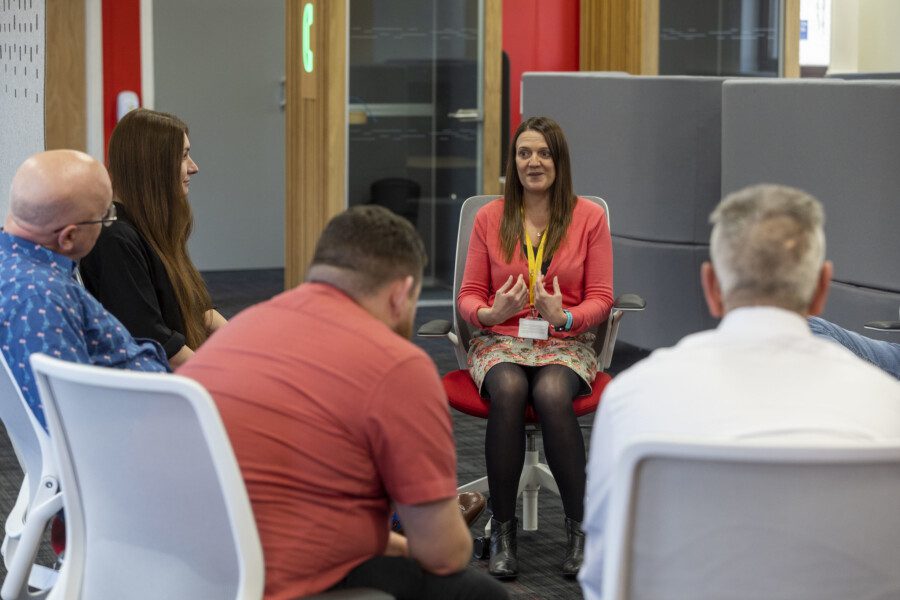Top Ten Tips for Training
Pete Smith, learning, development and innovation lead for Community Justice Scotland is one of only four accredited master trainers in the UK in the risk assessment system Level of Service / Case Management Inventory (LS/CMI). He’s also been a teacher in further and higher education. Here he gives his expert advice on training.
1. Know your learners’ entry level behaviours
Use a simple online survey to gather information about what your learners expect from the course and what specific areas they want to develop. Be curious about entry level behaviours. These are the levels of skill, experience and knowledge that learners bring to the course so you’ll know how far they need to go to master a new skill. Be clear about the learning objectives and content of your training so people can make an informed decision on whether to take part.
2. Set the tone early
Learners’ expectations about a course are set very quickly. What you establish on day one becomes business as usual. If a group is met with an hour’s lecture before they have a chance to do anything for themselves, they’re more likely to settle into a passive learning mindset and it’ll be difficult to introduce active learning later. If the first activities are lively, interesting and involve getting out of their comfort zone then they’ll be more willing to do this throughout the course.
3. Be a guide on the side not a sage on the stage
Trainers often feel like they must be presenting or even ‘performing’ – but that’s just not how learning takes place. Effective training should bring the subject off the projector screen and into the room. Active learning has “stickability” because it’s built around learners’ prior learning and contextualised by their career contexts. Learning that involves research, conversation, experimentation, skills practice, and reflection is more likely to translate into real behaviour change in the workplace. Learners forget what they’re told but remember what they discover.

4. Look backwards and forwards
Learning is a career-length process. It’s shaped by prior experiences and future goals. Learners who see your training as a link in a longer chain will be able to see the relevance of their learning and forward plan development. When introducing a new topic or skill, look back and make links to prior learning. Then look forward. Where might this new skill take them and how does it intersect with higher level courses?
5. Show learners what success looks like
Adult learners are pragmatic. Often they want to get in, get qualified and get back to work. Trainers should remember the power of a good example – whether it’s a report, interview, speech or performance as knowing what success looks like will allow learners to assess their own work more effectively. Asking learners to analyse and assess the pros and cons of examples will give them valuable insight into how to apply best practice in their own work. This is especially important if there’s an assessment at the end of the course!
6. Don’t be afraid of technology enhanced learning
Many learners expect to use technology as part of learning. Video conferencing software has features that allow productive work in small groups. It’s possible to jump between breakout rooms, use virtual sticky notes to pool your ideas and collaborate on documents in real time. Using QR codes to access a YouTube clip or simply inviting learners to take pictures of flipchart work on their phones can help make learning faster and more engaging. But sometimes there’s no substitute for bringing everyone together in the same place with a blended approach.
7. Steer clear of “does that make sense?”
You might think a good way to check that people are learning is to ask, “Are we ready to move on?” or “Does that make sense?”. But learners may offer little resistance to moving on from a topic they’ve struggled with, or they tell you that something makes sense if they don’t want to single themselves out. It’s better to consolidate learning by asking questions or setting a task that allows learners to show what they’ve learned so far. Ask “What three things from this activity could you apply at work?” or “How does this concept relate to what we did yesterday?” then you can be confident that everyone is making progress.
8. Don’t be afraid to make in-flight adjustments
Many courses have aims, learning objectives and content prescribed by others. But if content isn’t delivered in the right way for your learners, then the group may never meet its learning objectives. Adjusting how you reach a learning objective is sometimes necessary to meet the needs of your group. Recognise when something isn’t working and experiment with new routes to success. Could a paper case study become a roleplay? Perhaps a reading activity becomes a group discussion, or a written assignment becomes a presentation. Learners engage with content through a variety of different modes. Don’t be afraid to change things up.

9. Make learning inclusive
We all have different needs that impact our ability and readiness to learn. Ask learners about their needs before a session so you can be prepared to provide support. Some people who experience dyslexia benefit from using coloured overlays or coloured paper. Larger text, sans serif fonts or closed captions in videos may make a huge difference to your learners’ experience. If you’re using a venue – check ahead to ensure the building and facilities are accessible to all. To support neurodiverse learners, you might consider a quiet area or cool down space in the form of a breakout room or giving people the option to work independently or with support. Recognising the impact of trauma is crucial, especially if training involves any potentially distressing content. Even the timing of sessions plays a part. Training that occurs late in the day might require some energiser activities or perhaps a more relaxed approach to deal with dipping energy levels.
10. Be compassionate to everyone involved in the training – especially yourself
It’s always worth remembering that learners show a tiny fraction of themselves so we can’t know what’s going on outside of the training room. Disengagement, disruption and absenteeism usually occur for a good reason. Offering support and alternative opportunities to take part can re-ignite someone’s interest in learning – especially if their experiences in formal education were unfulfilling or intimidating. Extend this kindness to yourself. Training can be stressful and for most of us the nerves never really go away! Accept that you don’t need to be perfect and know everything. Guiding a learner to find out something for themselves is infinitely preferable and less daunting than always being expected to have the correct answer up your sleeve. If you’ve had a tough day – debrief with another trainer and reflect on what you could change next time. The key is to learn from difficult days and let them go.
- Community Justice Scotland’s team regularly train professionals from a range of careers including justice social workers, people involved in the delivery of unpaid work and restorative justice practitioners.
- More than 1,500 course places were filled in 2022-23 covering all 32 local authority areas across Scotland.

